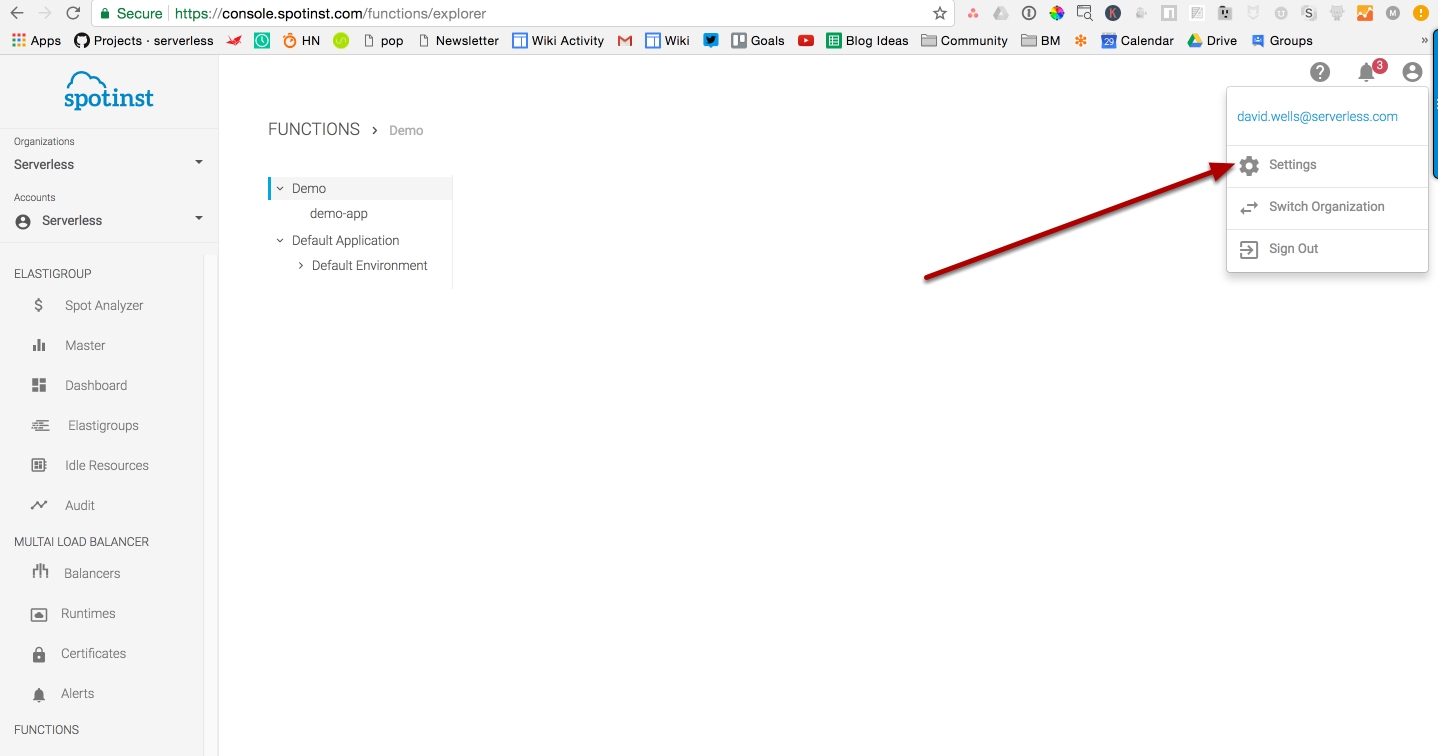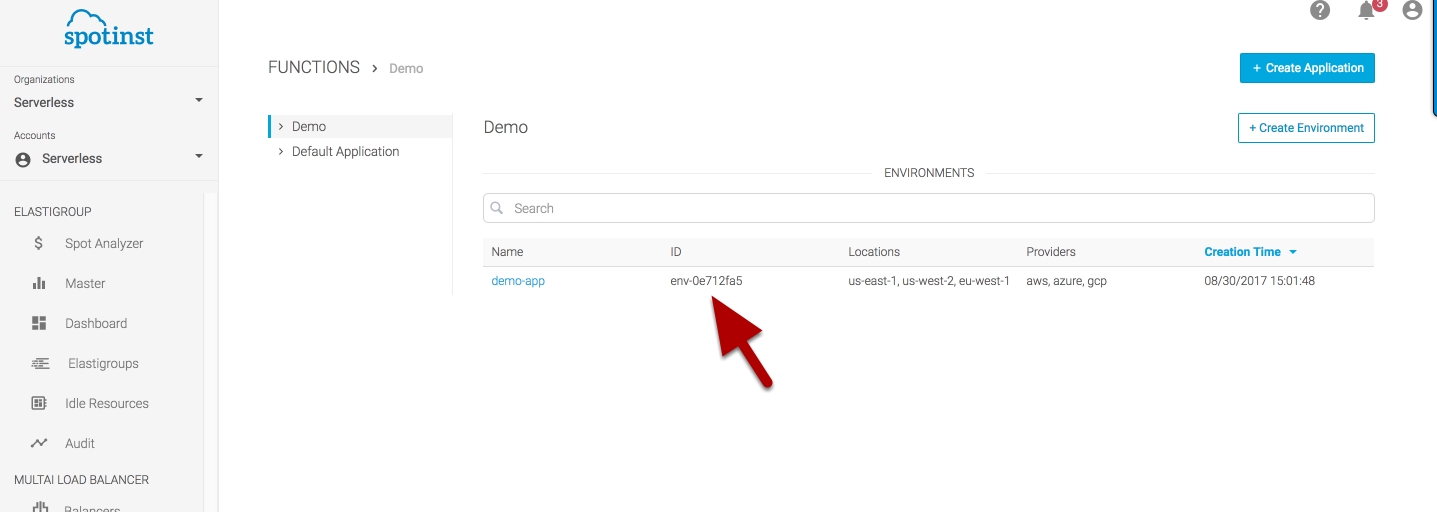We've seen it time and time again: companies get tremendous cost savings when they port over into the serverless realm.
Some real world examples:
- How I cut my AWS bill by 90% by going serverless
- Costs a small fraction (~1%) of the traditional cloud approach
- AWS Lambda: 9 million API calls for $1
What if I told you...it just got even cheaper?
Serverless & Spotinst team up
Introducing the latest serverless provider integration, Spotinst.

Spotinst Functions enables users to deploy multi-cloud functions at Spot Prices. By leveraging spot instances, you could save 50 to 80% over standard serverless FaaS pricing.
Spotinst supported runtimes
Spotinst currently supports Node (4, 6, & 8.3), Java, Python, Ruby, Go as function runtimes.
Cross-cloud deployments
Spotinst functions can be deployed simultaneously in AWS, Azure and Google Cloud Platform.
This ability to deploy across clouds improves SLA and offers higher function availability. If one cloud provider goes down (or pricing is cheaper elsewhere), Spotinst handles this for you under the hood.

Edge location support
Reduce data transfer costs with edge location support. Unlike other edge FaaS solutions, Spotinst Functions doesn’t have limitations on external api calls or execution time limits.
They are currently supporting 15 different locations around the US and 10+ locations in APAC, SEA & Europe.
Function Analytics
- Invocation count & latency metrics, errors & HTTP response codes analytics
- Geo Location analytics
- Easy log debugging
Pricing Example (Compute Only):
Lets see how pricing stacks up with an example.
With 500,000 Requests per Minute (21,600,000,000 Monthly) with 256MB of RAM & <10ms execution time, the prices would break down like so:
- Google Functions: ~$10,000 compute time
- Amazon Lambda: ~$9,000 compute time
- Microsoft Azure: ~$8,500
- IBM Bluemix (Open Whisk): ~$9,000
- Spotinst Functions: ~$2,000 (!)
Demo
Getting started
Here’s what you need to get started with the Spotinst plug-in now:
Start here in our docs.
Or continue reading for step by step instructions on how to set up and deploy your first service on Spotinst.
Pre-requisites: Make sure you have the latest version of serverless installed on your machine.
# install serverless in your command line
npm install serverless -g1. Sign up for Spotinst Account

You can sign up for a Spotinst account here
2. Head into the functions console

Inside of Spotinst, head into the Functions console.
https://console.spotinst.com/functions
3. Create a new Spotinst application

Create a new app and give it a name.
An application in Spotinst is a logical group of several environments. Most commonly, it stores environments that share the same business application (e.g., testing and production of a specific function). More on Spotinst applications in the Spotinst docs
4. Create a new environment in the Spotinst application

Name the Environment and choose which regions and providers you want to run the function in.
This is where you can choose to run your function across cloud providers and within multiple regions. 🎉
Inside Spotinst, the environment refers to a configuration group that contains actual Functions. Learn more in the spotinst docs
5a. Grab an API token in Spotinst settings

Now head into spotinst setting. We need to grab an API key!
5b. Generate Spotinst API token

Click on API in settings and then on Generate Token. Generate SpotInst API tokens here
5c. Name your API token

Name your token and click generate.
https://console.spotinst.com/#/settings/tokens/permanent
5d.Copy Token for sls credentials

Now copy the token, we will need to use it with the sls config credentials command in our terminal.
https://console.spotinst.com/#/settings/tokens/permanent
6. Grab Account Id

We also need your Spotinst account ID. You can grab that here: https://console.spotinst.com/#/settings/account/general
7. Use sls create and create a Spotinst service

Back in your terminal, create a new Spotinst service.
8. Configure your Spotinst credentials on your machine

sls config credentials -p spotinst -t hhhhhhhh -a act-731927399a. Grab environment ID from Spotinst UI

You will need your spotInst environment ID from the UI to deploy your functions.
Grab the environment ID and drop it in the serverless.yml of the service.
9b. Add your SpotInst environment key to serverless.yml

10. Deploy your functions

Run serverless deploy
The serverless framework will read your config from serverless.yml, package up the function and deploy the code to your Spotinst function environment
11. Get info about service

Run sls info for information and live endpoints of your service.
You can view your functions in UI

or via the sls info command in your terminal.
Multi-Cloud & Multi-region functions
🎉 Congrats you are now leveraging spot instance prices and running your functions across multiple clouds.
If you have questions or comments about the integration, we'd love to hear from you in the comments below or over on the serverless forums.


